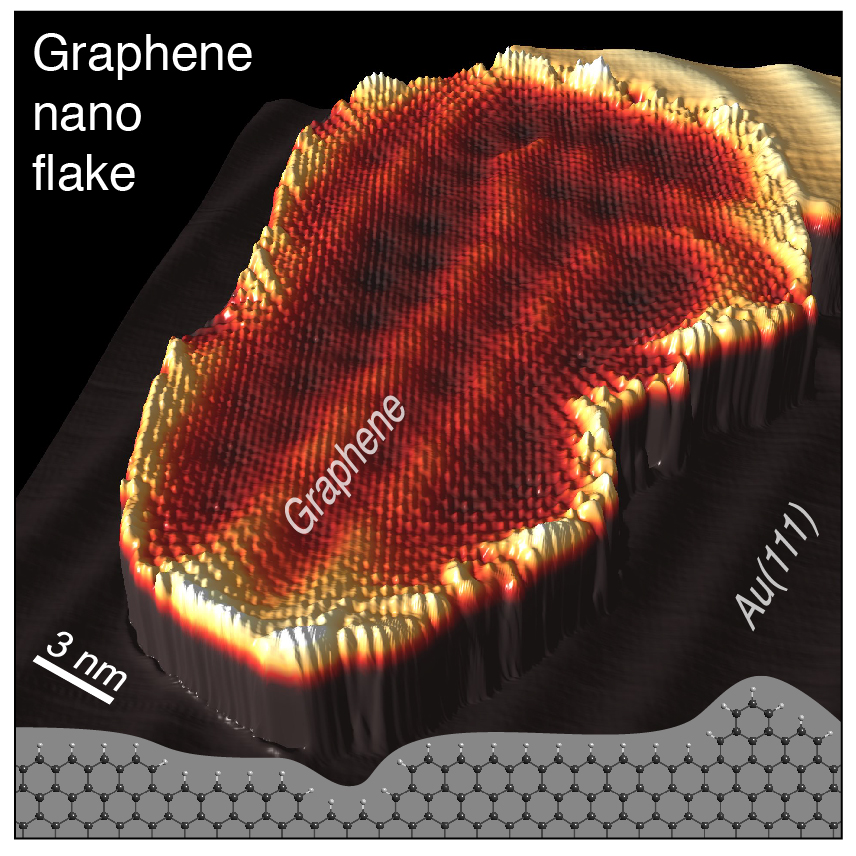Graphene
Graphene is a one-atom thick flat layer of carbon atoms arranged in a honeycomb crystal lattice. The unique property of the electronic structure of graphene is that the π and π∗ bands touch at a single point at the Fermi energy at the corner of graphene’s hexagonal Brillouin zone, the Dirac point. In the vicinity of the Dirac point Dirac point the bands display a linear dispersion and form Dirac cones. Undoped graphene is thus a semimetal. The linear dispersion of the bands mimics the physics of quasiparticles with zero mass, the so-called massless Dirac fermions. The fascinating electronic and transport properties of graphene make it to a point of focus not only in fundamental research but also in applied science and technology.
We use scanning tunneling microscopy and spectroscopy (STM/STS) in order to investigate the atomic structure and local electronic properties of continuous graphene layers as well as of nanometer-sized graphene flakes (see Figure at the bottom) epitaxially grown on metal surfaces. The advanced analysis of the electronic properties of graphene is performed either relying on the evaluation of the interference patterns produced by the impurity scattering of Dirac quasiparticles or by the investigation of the Landau level sequence in the magnetic field.

